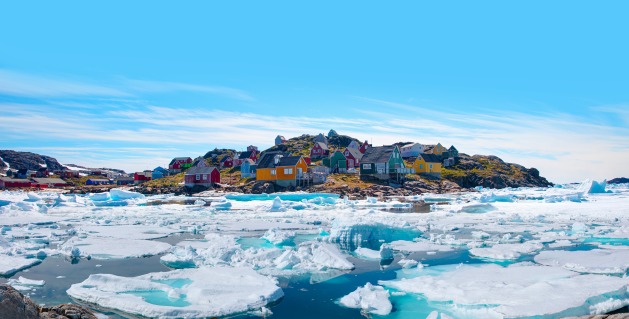BARCELONA, Spain, Apr 01 (IPS) – “…I am convinced that Greenland’s importance to U.S. interests will grow. Thanks to geography, historical ties (…), the United States has the inside track when competing for influence in Greenland (even as the Chinese have now started making regular visits)…” This quote from a diplomatic cable sent by the U.S. embassy in Copenhagen to Washington might seem recent, perhaps just before President Trump’s abrupt announcement of his intentions to “buy” or “annex” Greenland from Denmark, but that is not the case.
This message is actually seventeen years old, dating back to May 16, 2008. It is one of several Greenland-related cables that came to light with WikiLeaks, highlighting the fact that U.S. interest in Greenland is nothing new. It has been a consistent theme in U.S. foreign policy for at least the last 150 years.
The first documented discussion within the U.S. Government about acquiring Greenland dates back to 1867, the same year the U.S. purchased Alaska from the Russian Empire for $7.7M.
Around that time, internal consultations took place in the U.S. Federal Government regarding the possibility of buying Greenland (along with Iceland) for around $5.5M. In fact, the State Department even published a report on the matter in 1868. However, as we know, this proposal never materialized.
More fruitless discussions followed in 1910, and then, suddenly, another purchase occurred in 1916. This time, the U.S. government bought not Greenland but the Danish West Indies in the Caribbean (now known as the U.S. Virgin Islands) from Denmark for $25M.
The relevance of this purchase in the Greenland case is substantive because one provision in the international treaty that formalized the deal—known as the Treaty of the Danish West Indies—stated that the U.S. Government “will not object to the Danish Government extending their political and economic interests to the whole of Greenland.”
Because in 1916 Denmark controlled significant portions of Greenland but not the entire island. However, following the West Indies deal with the U.S., and with Washington’s consent, Denmark began a series of diplomatic movements that eventually allowed it to declare full sovereignty over all of Greenland. Only Norway contested this claim but lost in the International Court of Justice in 1933.
In April 1940, Nazi Germany occupied Denmark, and following that, the U.S. occupied Greenland, in order to prevent its seizure by Germany or eventually by Canada or even by the UK.
After WWII, the Danish government expected the U.S. to withdraw its troops. However, to their surprise, in 1946, the U.S. made a new proposal to purchase Greenland, this time offering $100M. Once again, the deal did not go through, and despite Copenhagen’s diplomatic efforts, the U.S. military stayed.
With the creation of NATO—and Denmark being one of its founding members—Copenhagen changed its policy, accepting the status quo. In 1951, Denmark signed an agreement allowing the U.S. to continue its military and defense activities in Greenland. In 1955, new serious discussions within the U.S. government about another potential offer emerged, and there is evidence that Vice President Nelson Rockefeller was behind another unsuccessful attempt in 1970.
With the end of the Cold War, U.S. interest in Greenland dramatically decreased, and most U.S. military bases on the island were dismantled, except for the one in Pituffik (then known by the Danish name of Thule).
With the start of the new millennium, the increasing effects of climate change and the escalation of geostrategic interest in the Arctic region, Washington reactivated its interest in the largest island on the planet.
However, this time rather than proposing another purchase to Denmark—after so many failed attempts—the U.S. opted for a more subtle policy, indirectly supporting Greenland’s pro-independence movement. The idea was that a newly independent and potentially weak Greenland could be more easily influenced by the U.S.
The surprise came in 2019 when President Trump reignited public debate on the issue and even cancelled an official trip to Copenhagen at the last minute after the Danish Prime Minister publicly rejected the possibility of selling Greenland.
With Biden in office, the issue was largely forgotten—until recently, when Trump brought it back, adopting an even more aggressive approach. It is no coincidence, then, that the U.S. opened a Consulate in Nuuk, Greenland’s capital, in 2020, despite the country’s small population of around 50,000 people and a negligible number of U.S. residents, aside from the few U.S. military personnel stationed at Pituffik.
The key questions here are: after so many failed attempts by the U.S. to purchase Greenland over the past 150 years, what makes Trump believe that he will succeed? Is the current White House policy—so aggressive and public—really the best way for the U.S. to regain influence, or even secure a new role in Greenland? Could this approach, in fact, jeopardize U.S. interests in the region in the long term? And last but not least, beyond the Danish Government, the Greenlanders may have something to say, and judging by the results of the recent elections, it seems they are not really in the mood to accept Trump’s expansionism.
Manuel Manonelles is Associate Professor of International Relations at Blanquerna-Ramon Llull University in Spain
© Inter Press Service (2025) — All Rights Reserved




